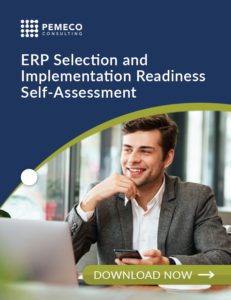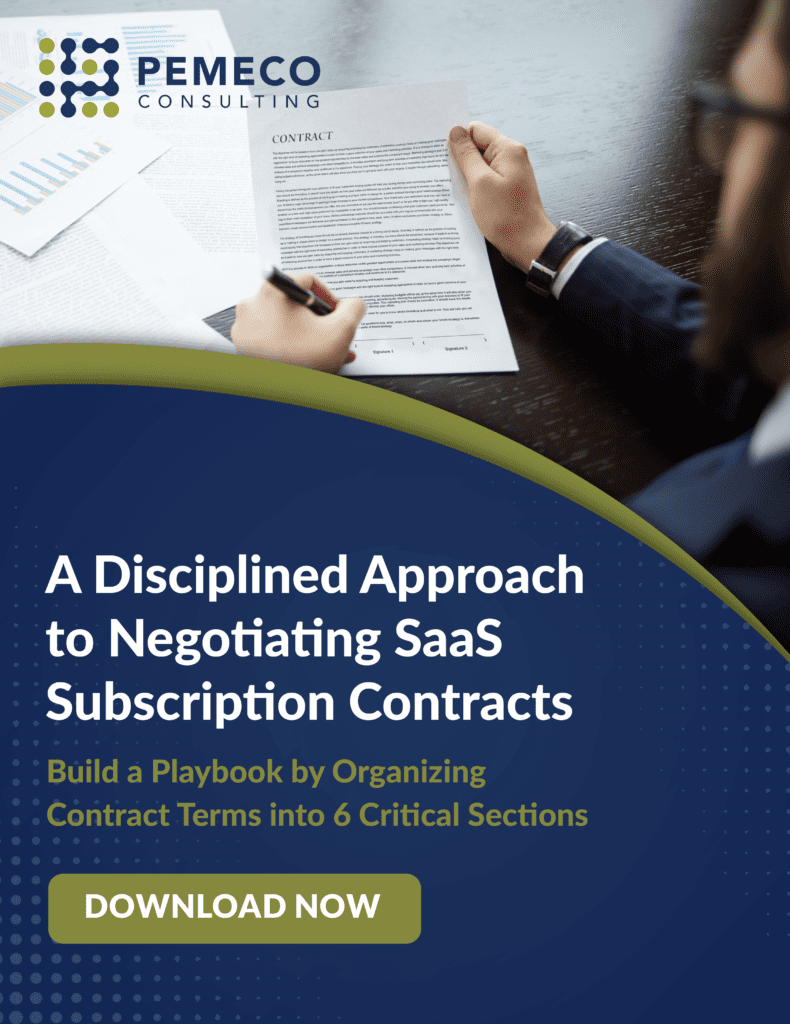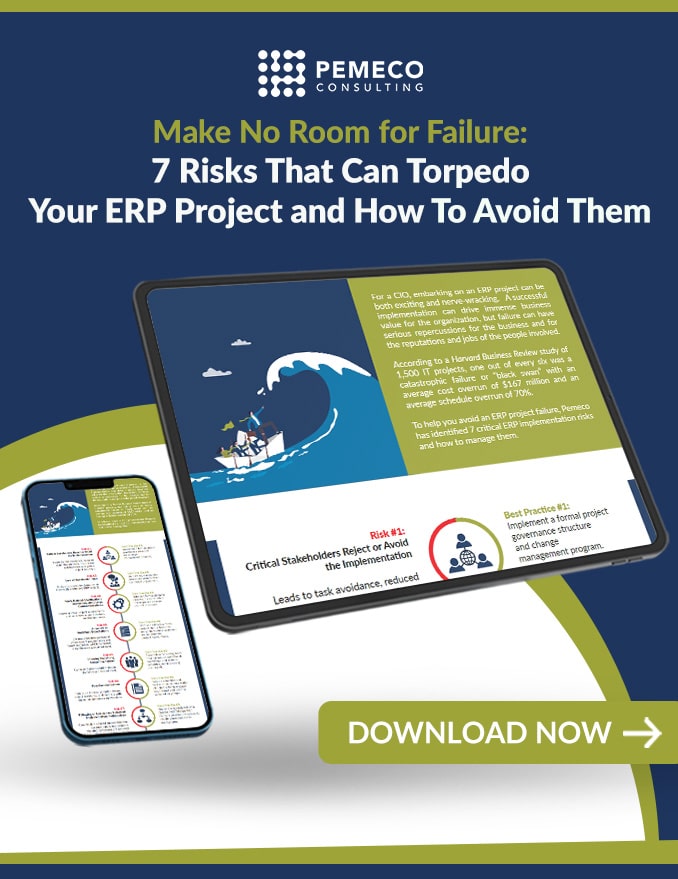It’s a mistake to underestimate the complexity of the ERP selection process. Even if you think a system meets your needs, there are technical pitfalls to avoid, hidden costs to manage, and future implementation challenges to consider. Use our 8 dimensions of vendor fit (read our post here) and the right mix of due diligence tools (discussed below) to select the right ERP software the first time – and win the approval of everyone on your buying committee.
We’ve put together this list of ERP selection tools to help you make the right ERP selection decision. The tools are broken down across ERP selection, implementation scoping, and contract negotiations phases.
Selection Phase
1. Mutual non-disclosure agreement
The last thing you want when entering into a contract is for the other party to disclose your sensitive information. A mutual non-disclosure agreement is a contract that assures confidentiality and provides a basis to freely share information that’s critical to making a well-informed ERP selection decision.
2. Vendor onboarding document
An onboarding document helps set expectations and helps the vendors hit the ground running. It should offer the vendors key information about the selecting company’s business, key project drivers, vendor evaluation plan, and decision-making methodology.
3. Financial review
A vendor’s financial stability, solvency, and capacity to invest in the product are key – especially if you’re planning to use the ERP system for the next 15 to 20 years. It’s important to analyse financial statements and creditworthiness to get comfort that the vendor is liquid, solvent, and strong.
4. Software development roadmap review
A company needs to be confident that the ERP software will meet its needs over time. It’s important to review a vendor’s product development roadmap to assess how the vendor plans to invest in enhancements to functionality, technology, user experience, and other areas.
5. Request for information/proposal (RFI, RFP)
Requests for information (RFIs) are used to gather high-level information about the vendors, software, pricing, and implementation approach. Requests for proposal (RFPs) for ERP are used to gather much more detailed information and are even sometimes used to get a commitment to certain contractual terms.
There are different approaches to RFPs for ERP software. Some companies like to ask vendors to complete very detailed requirements matrices – sometimes with thousands of lines! Though there is no right or wrong approach, ours is different. Our clients tend to use software demonstrations to see the detailed features and functions in scripted show-and-tell sessions. If our clients want to use RFPs to get documented responses about the solution, we suggest that the questions be hyper-focussed on key differentiators and mission-critical requirements.
6. Executive demonstrations
An executive demonstration is a purposeful exercise designed to see whether the ERP software can meet a company’s show-stopping needs. If a vendor’s solution falls short, that vendor will typically be eliminated.
7. Detailed functional demonstrations
Detailed functional demonstrations are used to show how well an ERP solution supports a company’s end-to-end business requirements. Well-crafted demonstration scripts use the company’s future state data and business processes as the guides. Detailed functional demonstrations can last from one full day for a small company to four full days for large multinationals per vendor.
8. Technical demonstrations
Assessing the technological underpinnings is critical to understanding whether the software is scalable, performant, extensible, and secure. Consider asking the vendors to demonstrate technical topics relating to development, testing and upgrade, reporting and analytics, workflow, integrations, document handling, platforms, support, security, and infrastructure.
9. Reference checks
Reference checks are vitally important. Use this where-the-rubber-meets-the-road activity to talk to similar companies using the software in a similar fashion. Ask them about their experiences – what works better than expected and what they wish they had known.
10. Hands-on workshops
Hands-on workshops are seldom used because the probable confusion outweighs any potential benefits. On implementation, it often takes weeks and months to properly train users. If used at all, it would be with small companies evaluating small ERP systems
11. Consulting team interviews
ERP projects live or die by the quality of the implementation. ERP buyers should interview the proposed consulting team to make sure that the consultants have the right skills and are the right cultural fit.
ERP Implementation Scoping Phase
12. Implementation scope of work, software scope, and proposal
Before negotiating ERP software and services contracts, consider running an implementation scoping exercise to properly size the software requirements and to build a scope of work and budget. Consider using the outputs of the scoping exercise as inputs to contracts.
ERP Contracting Phase
13. Benchmark analysis
ERP software pricing is complicated and often open to big discounts if a company knows how to negotiate. Companies should think about building a data-driven negotiations playbook using benchmarks of both pricing and non-pricing terms and conditions.
14. Negotiation matrix
Generally, standard form ERP contracts heavily favor the vendor. Many companies don’t realize that the contracts are negotiable. Especially with cloud contracts, it’s important to negotiate a relationship that protects your interests in having a performant and secure system. We recommend a simple prioritized matrix to track the terms and concessions that are important to you and those that are important to the vendor.
15. Drafting
The devil is always in the details. A well-drafted contract clearly articulates the parties’ rights and obligations. Your company should have drafting expertise on its side of the table to make sure that the language captures the key deal points and concessions.
Conclusion
There is no universally correct way to evaluate vendors. The right approach and the right mix of due diligence tools are context specific. Some companies want to move quickly, others more slowly. Some companies want to evaluate many solutions, others only a few. The key takeaway is that you need to position your company to make the right decision, in the right timeline, with an acceptable level of risk.
Read more about ERP selection services here or contact us to schedule a meeting with one of our advisors.




